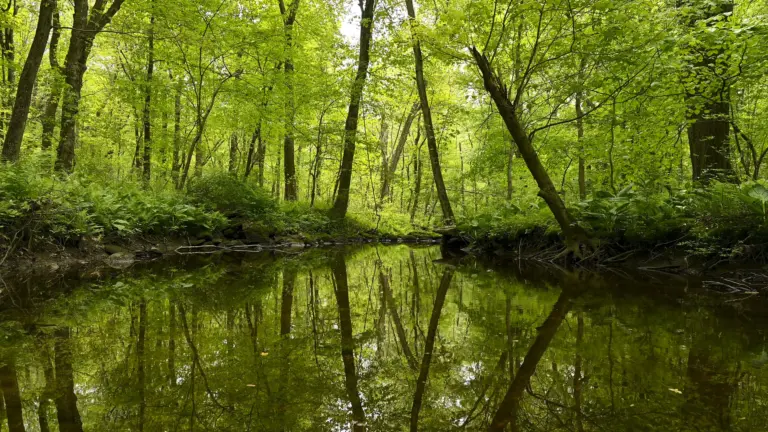
By Anne W. Semmes
Dr. Daniel Ksepka, the Bruce Museum’s curator of science, has a tale to tell about the oldest tree-dwelling bird, discovered to have lived at least 62 million years ago. Thanks to the artistry of Sean Murtha at the Bruce, we have a life reconstruction image of the bird based on its descendant, the present African mousebird; the ancient bird is rendered with a shorter tail. “It was the size of a house sparrow,” says Daniel. He guesstimates the bird’s wingspan at eight inches.
It seems the bird’s fossilized bones were found recently by 11-year-old twin boys, sleuthing about a barren-looking landscape in northwest New Mexico.

The boys’ father, Dr. Tom Williamson, a vertebrate paleontologist who specializes in mammals, took a good look at what his boys found, saw the hollow bones that only birds have, did some dating, then contacted that bird fossil expert colleague, Daniel Ksepka, to collaborate in the investigation. The result is Ksepka’s co-authoring a paper about the bird’s discovery, published this week in the Proceedings of the National Academy of Science.
What intrigues Daniel is where those bird fossils were found. “It’s so cool, as it is so close to the extinction point where the asteroid hit.” He refers to that great asteroid calamity off the Yucatan peninsula 65 million years ago, which brought the extinction of the dinosaurs and many mammals, and led to this bird evolving to be a tree dweller.
“It was a time of experimentation and diversification. Up until then, the birds had been blocked off by other animals. But there was a very rapid recovery by the birds. Birds took to the trees, to the water, to the seas, to the oceans.”

This tree dwelling bird also has beat out the previous oldest bird found, says Daniel. That bird, a penguin, happens to be his favorite: “That penguin fossil was found in New Zealand and dates to 61 million years ago.” Other bird fossils found to have lived in that time, he says, were owls, tropicbirds, and “terror birds” he describes as “large, flightless relatives of the modern Seriema.”
This newly discovered tree dweller bird shows that vital fourth toe able to pivot around to the back of the foot “to better grasp onto branches.” This adaptation, with its fancy name of “semi-zygodactyly,” evolved independently in many different groups of birds.
And now this tree dweller has its own fancy name: Tsidiiyazhi abini. The name comes from the Navajo language meaning “little morning bird,” which suggests its small size and its having lived early in the Paleocene period, which followed the Cretaceous mass extinction period.
Daniel set me straight when I asked if he had any species named after him. “One may name a species after anything they like, provided they do not name it after themselves (unallowable bad form) and the name is not defamatory.” Most new names, he says, “honor someone involved in the field, perhaps the discoverer or collector of the fossil, or someone who supported the research program or museum.”
To date, Daniel has been involved in identifying 11 extinct bird fossils, including Tsidiiyazhi abini, which was a collaboration between himself, Williamson, and Dr. Thomas Stidham, another American paleontologist, based in China. Multiple collaborations on species identification are common, says Daniel.

Fossil discoveries involve “lots of walking,” Daniel says. “People sometimes think of paleontologists as digging a big pit and hauling out fossils, but in most of the field expeditions I have been involved with we walk for miles, prospecting for areas that are suitable for fossil preservation and only start excavating once we find some bits of bone exposed at the surface. Some sites end up being duds, and others end up being incredibly rich.”
The site where Tsidiiyahzi was found he calls “a great one, as it also is yielding mammal, lizard, and snake bones.”
So, what are those ten other extinct birds Daniel has identified? First, there are those discoveries where he was lead author: Pelagornis sandersi, the largest known flying bird; Kairuku waitaki, that penguin from New Zealand; Kairuku grebneffi, another penguin; Celericolius acriala, a mousebird with unusually long wings; Cyrilavis colburnorum, a primitive parrot from Wyoming; and Eocypselus rowei, a primitive relative of swifts and hummingbirds.
Those identified by Daniel and collaborative teams include: Perudyptes devriesi, an early penguin from Peru; Icadyptes salasi, a spear-billed penguin also from Peru; Inkayacu paracasensis, the only fossil penguin with intact feathers; and lastly, Paracoracias occidentalis, a North American member of the roller bird lineage!




